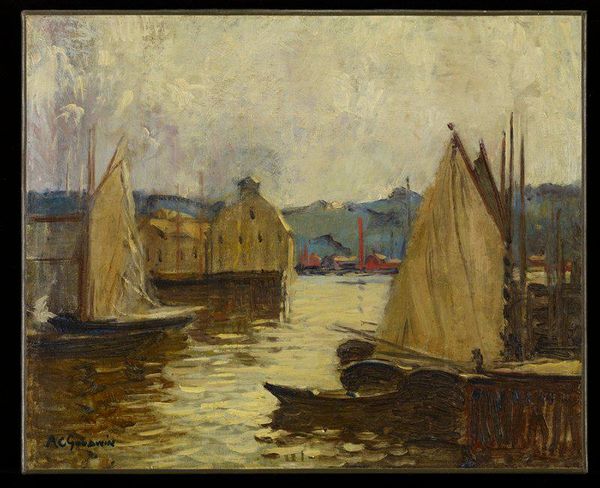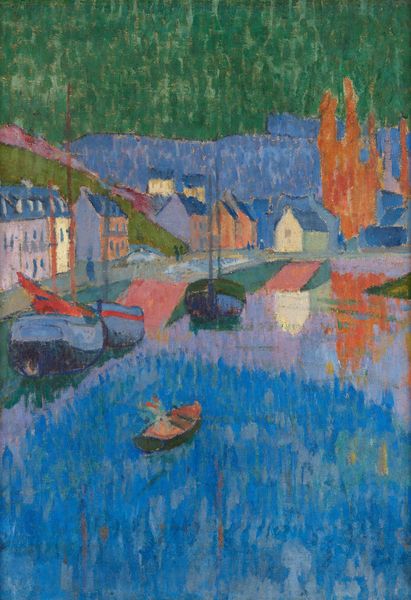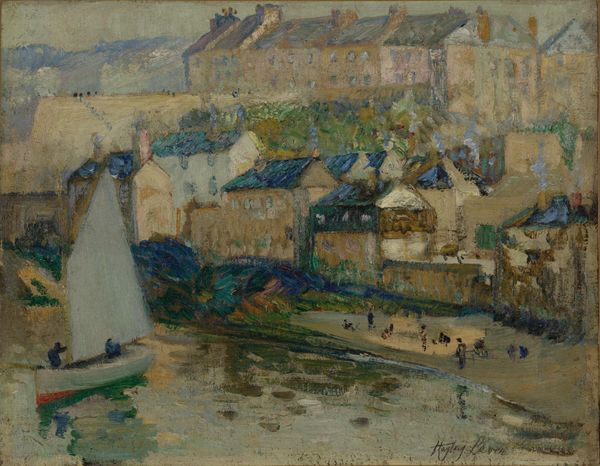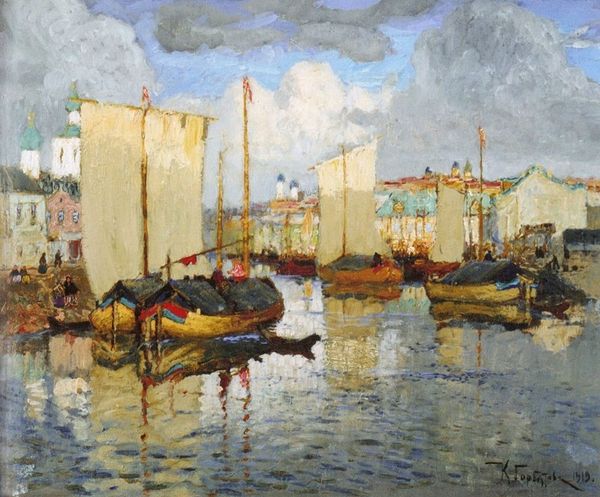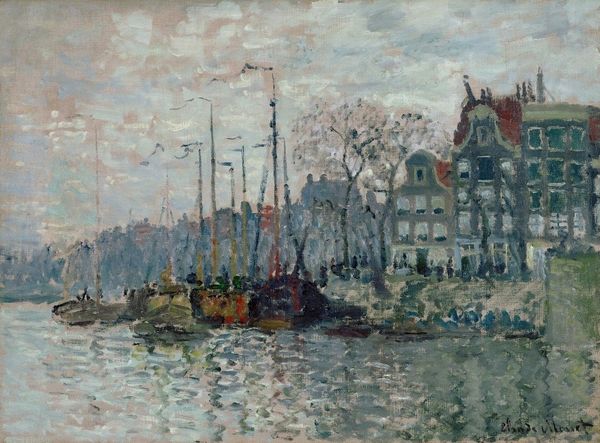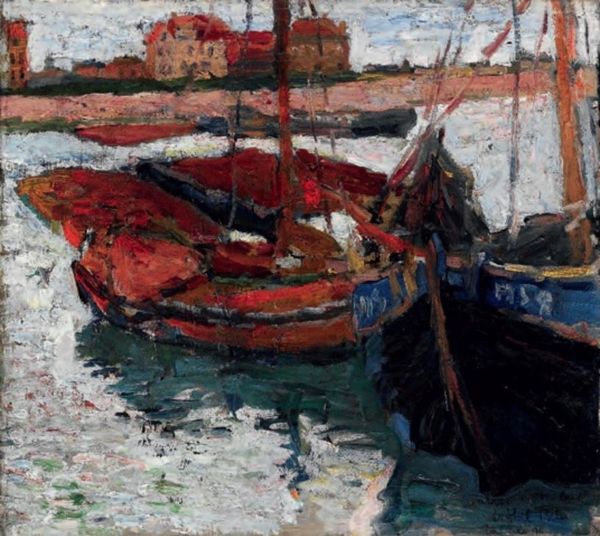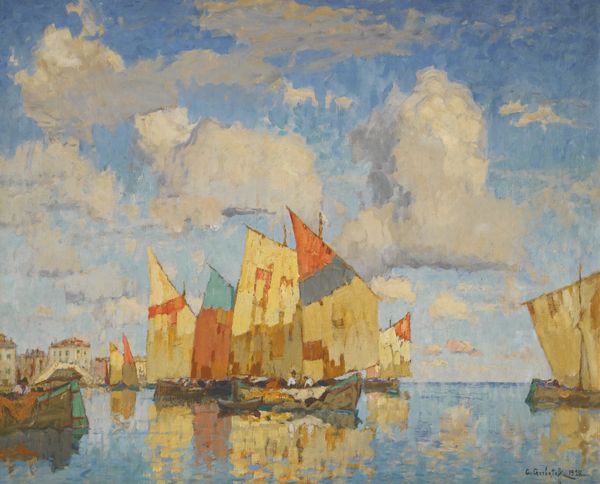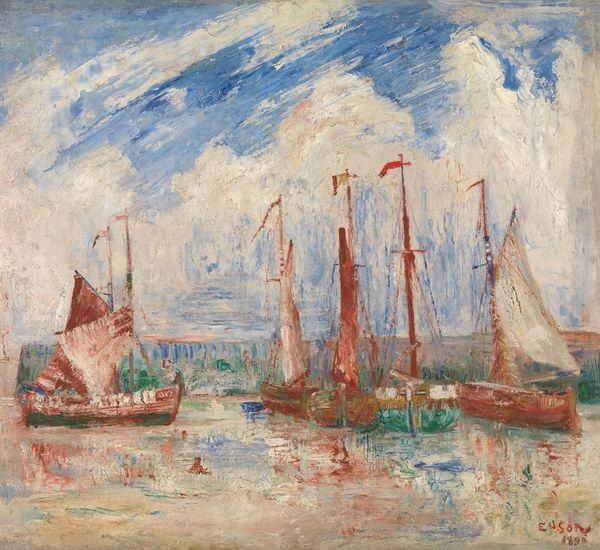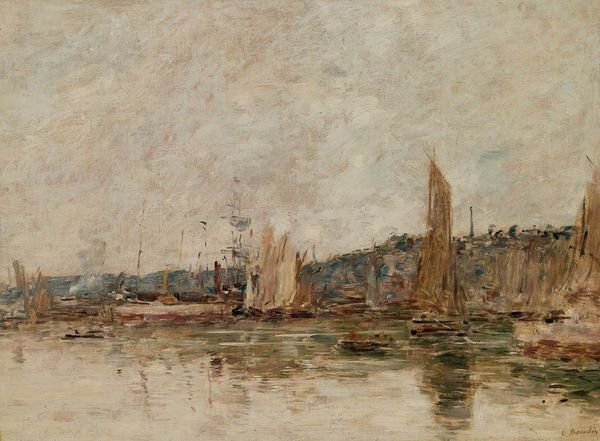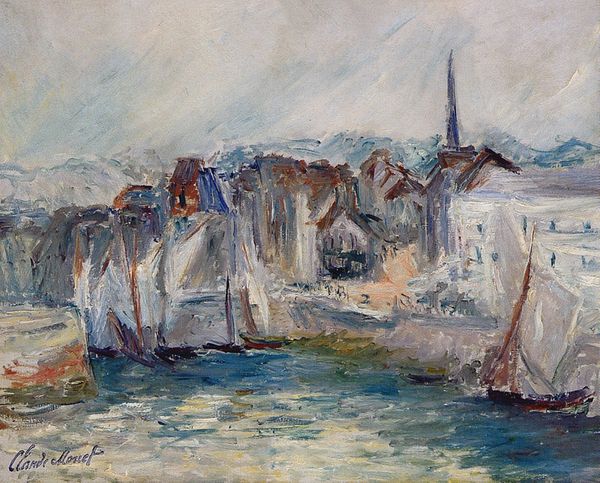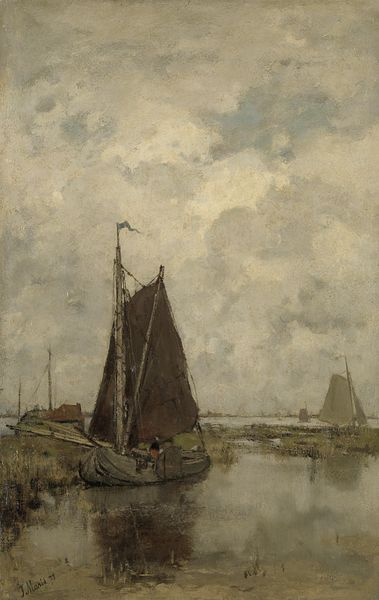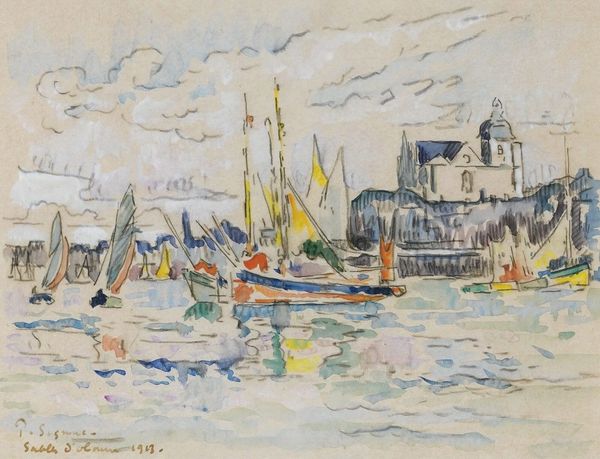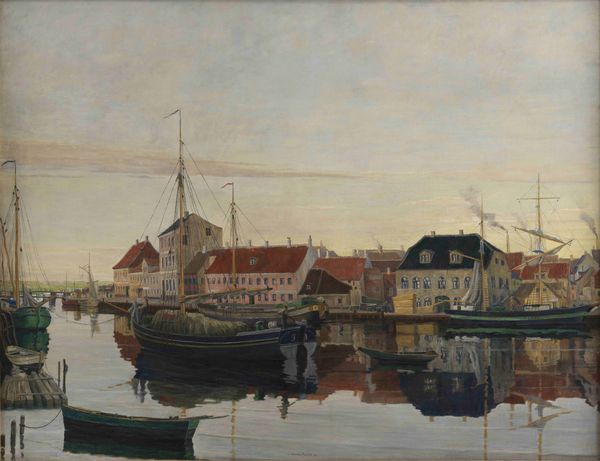
#
abstract painting
#
impressionist painting style
#
impressionist landscape
#
possibly oil pastel
#
oil painting
#
acrylic on canvas
#
street graffiti
#
underpainting
#
painting painterly
#
watercolor
Copyright: Public domain
Editor: Here we have Konstantin Gorbatov’s “Boats by the River Bank,” painted with oil on canvas, it seems. I’m struck by the contrast between the rather muted tones and the bright, almost playful colours in the architecture. How do you interpret this work? Curator: Well, considering this piece, I'm drawn to consider its materiality. What kind of canvas was used? Was it locally sourced? How did the availability of materials shape Gorbatov’s palette? We must examine how the socio-economic conditions influenced artistic production, especially around colour and its perceived vibrancy here. Editor: That's an interesting way to approach it! I hadn't thought about the availability of materials influencing the aesthetic. Curator: Exactly! Think about the pigment trade, the cost of certain colours. Was Gorbatov making a statement, perhaps subtly criticizing material inequality through his artistic choices? How does this "painterly" approach as some call it challenge boundaries between "high" and "low" art when his peers use clean lines? Editor: So, by looking at the materials and techniques, we can gain insights into the broader social context of the artwork. Does that mean the impressionistic style becomes less about aesthetics and more about... access? Curator: Precisely. Consider, then, the labour involved in creating art. Was it solitary, or collaborative? Examining those brushstrokes, the possible oil pastel strokes – were these fast, commercial works done by many or longer, solitary labors of expression. What meaning can we make from the contrast and painterliness of a possibly commercial artwork here? These questions lead to understanding material relations of power. Editor: This has definitely shifted my perspective. I was focused on the image itself, rather than how it came to be. Curator: Seeing art through the lens of material conditions encourages us to think critically about production and consumption. Every brushstroke is potentially a record of labour and a reflection of its time. Editor: I’ll definitely be thinking about the "making of" much more when I look at art from now on.
Comments
No comments
Be the first to comment and join the conversation on the ultimate creative platform.
